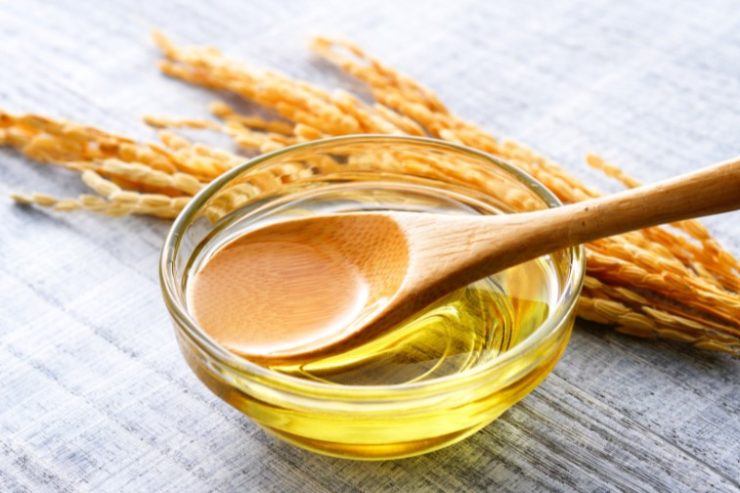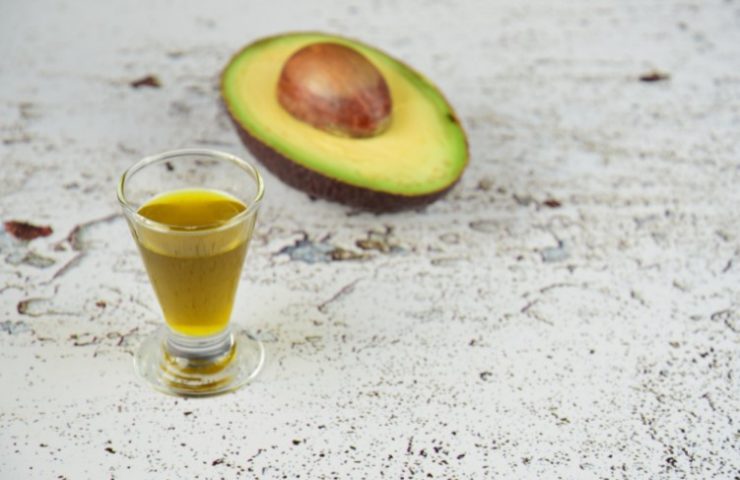Safflower oil comes from the seeds of the safflower plant. This is a flowering plant in the same family as sunflowers, with seeds that look almost identical.
This is one of my favorite all-purpose oils to keep on hand in the kitchen. It adds almost no flavor of its own and it has an incredibly high smoke point of 510 F. Making it just as good for raw applications as it is for high heat stir frys.
It can be tough to match such an impressive smoke point. But, there are a few other oils that will get the job done. Here are 7 of my favorite safflower oil substitutes, and an explanation of which recipes and cooking techniques each one is best suited for.
In This Article
What Can I Substitute For Safflower Oil?
1. Sunflower Seed Oil

If you’re looking for a substitute that’s as close to safflower oil as possible, look no further than sunflower seed oil.
Sunflower and safflower oil are pressed from the seeds of different plants within the same family. In most cases, it would be difficult to tell the two oils apart. And that makes this just about the best alternative you’re going to find.
The one slight difference is that sunflower seed oil has a slightly lower smoke point, at 450 F. But don’t worry, that’s still plenty hot for just about any use in the kitchen. Plus, you’ll often find sunflower seed oil to be slightly less expensive than its safflower cousin.
2. Grapeseed Oil

Two of safflower oil’s best features are its neutral flavor and high smoke point. Grapeseed oil can’t quite stand up to the high heat level of safflower, but it has a respectably high smoke point of 420 F.
But, when it comes to clean, neutral flavor, grapeseed is the oil to beat. And it’s that light and flavorless nature of grapeseed oil that makes it the go-to, all-purpose oil in many professional kitchens. Not to mention my preferred choice at home.
It’s great raw or for cooking applications, and its neutral flavor makes it adaptable to any cuisine you can think of.

Pro Tip: Grapeseed oil tends to get marked up as a specialty item in big-box and health food stores. Try taking a trip to your local Asian market or restaurant supply store where it’s common and often more reasonably priced.
3. Rice Bran Oil

Rice bran oil is another neutral-flavored, high-heat, do-it-all kitchen oil.
This option is pressed from the hard outer layer of brown rice grains and has an impressively high smoke point of 490 F. Not as high as safflower oil’s smoke point, but equally suited for day-to-day cooking temperatures.
Like grapeseed oil, this is another mainstay in restaurant kitchens, but is less commonly known by home cooks. Rice bran oil works well raw or in cooking applications, and is my top choice for deep frying.
Rice bran oil has the prerequisite high smoke point and neutral flavor like safflower, plus it’s also one of the least expensive options, if you know where to look (back to the restaurant supply store we go).
4. Light Olive Oil

While extra virgin olive oil might be more famous, glamorous, and delicious (sorry light olive oil), it’s not a great substitute for safflower oil. It’s just got too much flavor and too low a smoke point.
Light olive oil, on the other hand, is a great option. It’s made from the same stuff as its extra virgin cousin, but it’s been further refined. This raises the smoke point, decreases the flavor, and even lowers the price.
You can use light olive oil anywhere you would safflower. And while it’s fairly neutral in flavor, you may still get some mild olive notes
5. Avocado Oil

Most cooking oils are pressed from seeds or nuts, but interestingly, avocado oil is pressed from the flesh of the fruit.
The flavor isn’t quite as neutral as safflower seed oil, but this is the only option that matches the high smoke point. In fact, avocado oil actually raises the bar by 10 F, with an incredible 520 F smoke point.
Its rich flavor and off-the-charts smoke point make avocado oil a versatile substitute. The one downside is that it’s probably the most expensive option on this list.
6. Peanut Oil

Peanut oil is another good high-temperature substitute for safflower oil, with a smoke point of 450 F. The one thing to remember though is that peanut oil is often made from lightly roasted peanuts, and that gives a toasty, nutty flavor.
Now, this isn’t a bad thing by any means, you just have to know when to use it. The taste makes it a perfect stir-fry oil that fits into the flavor profile of many Chinese, Thai, and Vietnamese dishes. And, it can add a subtle additional flavor when used as a deep-frying oil
7. Canola Oil

Canola oil is a good all-purpose safflower oil substitute for two main reasons. It’s the most readily available alternative that you’ll find, and it’s one of the least expensive.
Like safflower oil, canola is very neutral in flavor. The only area where it comes up short is its 400 F smoke point.
400 is still considered a high heat oil, but it’s on the low end. However, for most applications, this shouldn’t be a concern. And the fact that you can find this substitute in any grocery store and even many gas stations and corner stores, makes this a very worthwhile option.
Tips For Working With Safflower Oil Substitutes
There’s no shortage of great substitutes when it comes to safflower oil. All 7 options outlined above have a high smoke point and neutral flavor.
Just remember that peanut, olive, and avocado oil have a slightly stronger flavor than the rest. Other than that, all of these alternatives can be used in equal amounts to safflower oil in both raw and cooking applications.
Frequently Asked Questions
Is extra virgin olive oil a good substitute for safflower oil?
In most cases, extra virgin olive oil is not a good substitute for safflower oil. Extra virgin olive oil has a much stronger flavor than safflower oil as well as a much lower smoke point.
Is sunflower oil the same thing as safflower oil?
The two oils are not the same but they are made from plants in the same family. You can use the two oils interchangeably in almost any recipe.
Can I use vegetable oil instead of safflower oil?
Yes, you can use vegetable oil in place of safflower oil in equal amounts. Vegetable oil is usually made from a blend of different plant-based oils including soybean, corn, sunflower, and even safflower oil itself.







